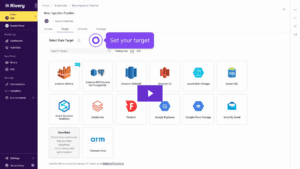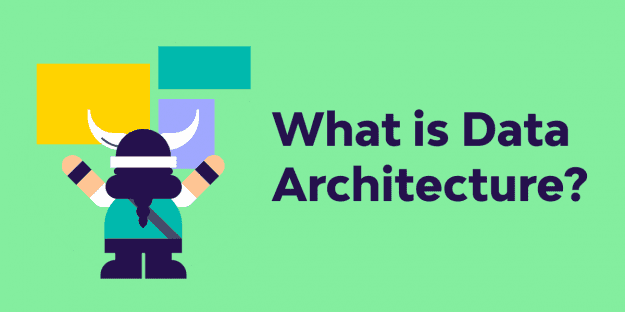Batch processing and stream processing are two different methods of handling data. Batch processing is processing vast volumes of data at once and at scheduled intervals. However, stream processing is constantly processing data in real-time as it arrives.
All in all, understanding the functions and differences between these methods can help you choose the best approach for your data processing needs.
Understanding Batch Processing
Batch processing is collecting data and processing it at arranged intervals in bulk. This method is fantastic for handling huge data volumes that don’t need prompt action. Better still, it’s helpful for various crucial tasks: end-of-day reporting, data warehousing, and payroll processing.
Batch processing systems can also manage extensive data operations efficiently, which allows for thorough data analysis and processing.
Understanding Stream Processing
Stream processing is the processing of data in real time; use this method for scenarios where immediate data processing is important.
Moreover, stream processing permits real-time analytics and decision-making, making it perfect for applications like fraud detection, network monitoring, and live updates.
Batch Processing vs. Stream Processing – Differences
Batch processing and stream processing are different ways of processing data.
Batch and stream processing are suited to different data operations. You can typically use batch processing for large-scale, infrequent data jobs that don’t require immediate results. It processes data in enormous chunks, making it perfect for tasks where a delay is acceptable.
Whereas, you can use stream processing for continuous, real-time data processing where immediate insights and actions are vital. It handles data as it flows in by ensuring minimal latency and real-time data analysis and response.
Criteria | Batch Processing | Stream Processing |
The Nature of the Data | Processed gradually in batches. | Processed continuously in a stream. |
Processing Time | On a set schedule. | Constant processing. |
Complexity | Simple, as it deals with finite and predetermined data chunks. | Complex, as the data flow is constant and may lead to consistency anomalies. |
Hardware Requirements | Varies but can be performed by lower-end systems as well as high-end systems. | Demanding while also requiring that the system be operational at all times. |
Throughput | High. Batch processing is intended for large amounts of data, and as such, it is optimized with that goal in mind. | Varies depending on the task at hand. |
Application | Email campaigns, billing, Invoicing, scientific research, image processing, video processing, etc. | Social media monitoring, fraud detection, healthcare monitoring, network monitoring, etc. |
Consistency & Completeness of Data | Data consistency and completeness are usually uncompromised upon processing. | Higher potential for corrupted data or out-of-order data. |
Error Recognition & Resolution | Errors can only be recognized and resolved after the processing is finished. | Errors can be recognized and resolved in real-time. |
Input Requirements | In batch processing, inputs are static and preset. | In stream processing, inputs are dynamic. |
Available Tools | Apache Hive, Apache Spark, Apache Hadoop. | Apache Kafka, Apache Storm, Apache Fink. |
Latency | High latency, as insight becomes available only after the processing of the batch finishes. | Low Latency, with insights being available instantaneously. |
Stream Processing Use Cases
Stream processing is particularly beneficial in several key areas. Here are 4 prime examples:
- Fraud detection: Stream processing allows financial institutions to monitor transactions in real time. This helps identify and flag suspicious activities immediately, which helps in preventing fraud effectively.
- Network Monitoring: In network management, stream processing enables you to constantly monitor your network traffic. This real-time analysis helps in quickly detecting and addressing any anomalies or issues, ensuring smooth network operations.
- Predictive Maintenance: Industries use stream processing to monitor equipment health in real time. As a result, potential issues can be detected and addressed before they lead to equipment failure, which saves costs and improves efficiency.
- Intrusion Detection: In cybersecurity, stream processing helps in real-time detection of unauthorized access or activities within a network. The detection allows for swift action to mitigate potential security threats.
Batch Processing Use Cases
You should use batch processing in scenarios where data processing must be scheduled and does not require immediate results. The 3 best examples include:
- End-of-day reporting: Financial institutions often use batch processing for end-of-day reports. Transactions and activities are accumulated throughout the day and processed in one go, generating comprehensive reports for analysis.
- Data warehousing: Organizations use batch processing to update data warehouses periodically. Large volumes of data are collected and processed in batches, ensuring that the data warehouse is up-to-date with the latest information for analytical purposes.
- Payroll processing: Companies process payroll data in batches, typically on a bi-weekly or monthly basis. This involves collecting timekeeping data, calculating salaries, and generating paychecks, all done in bulk to streamline operations.
Batch Processing Vs. Stream Processing: Performance
Batch processing and stream processing are two different approaches catering to the same goal: processing large volumes of data. Each approach comes with its own set of strengths and weaknesses, with performance being the most important one.
In terms of performance, businesses resort to batch processing as an easily manageable and optimizable method. On the other hand, stream processing is the best choice for processing volumes of data in real-time.
The performance of each method is influenced by complexity. Batch processing is generally less complex than stream processing, mainly because data comes in batches and is processed offline. Comparably, stream processing is rather more complex because it processes data in real time, which is a challenge on its own.
Another aspect that influences the performance of each data processing method is the processing speed. Batch processing is somewhat slower because it involves processing data in batches and takes some time. On the other hand, stream processing processes data in real-time and with low latency, which makes it a suitable option for tasks that require immediate actions.
Batch Processing: Large, Complex Data Analysis
With batch processing, data is collected in batches and then fed into an analytics system. A “batch” is a group of data points collected within a given time period.
Unlike stream processing, batch processing does not immediately feed data into an analytics system, so results are not available in real-time. With batch processing, some type of storage is required to load the data, such as a database or a file system.
Batch processing is ideal for very large data sets and projects that involve deeper data analysis. The method is not as desirable for projects that involve speed or real-time results. Additionally, many legacy systems only support batch processing.
This often forces teams to use batch processing during a cloud data migration involving older mainframes and servers. In terms of performance, batch processing is also optimal when the data has already been collected.
Batch Processing Example: Each day, a retailer keeps track of overall revenue across all stores. Instead of processing every purchase in real-time, the retailer processes the batches of each store’s daily revenue totals at the end of the day.
Stream Processing: Speed and Real-Time Analytics
With stream processing, data is fed into an analytics system piece-by-piece as soon as it is generated. Instead of processing a batch of data over time, stream processing feeds each data point or “micro-batch” directly into an analytics platform. This allows teams to produce key insights in near real-time.
Stream processing is ideal for projects that require speed and nimbleness. The method is less relevant for projects with high data volumes or deep data analysis.
When coupled with platforms such as Apache Kafka, Apache Flink, Apache Storm, or Apache Samza, stream processing quickly generates key insights, so teams can make decisions quickly and efficiently. Stream processing is also primed for non-stop data sources, along with fraud detection, and other features that require near-instant reactions.
Stream Processing Example: A soda company wants to amplify brand interest after airing a commercial during a sporting event. The company feeds social media data directly into an analytics system to measure audience response and decide how to boost brand messaging in real-time.
Simple Solutions for Complex Data Pipelines
Rivery's SaaS ELT platform provides a unified solution for data pipelines, workflow orchestration, and data operations. Some of Rivery's features and capabilities:- Completely Automated SaaS Platform: Get setup and start connecting data in the Rivery platform in just a few minutes with little to no maintenance required.
- 200+ Native Connectors: Instantly connect to applications, databases, file storage options, and data warehouses with our fully-managed and always up-to-date connectors, including BigQuery, Redshift, Shopify, Snowflake, Amazon S3, Firebolt, Databricks, Salesforce, MySQL, PostgreSQL, and Rest API to name just a few.
- Python Support: Have a data source that requires custom code? With Rivery’s native Python support, you can pull data from any system, no matter how complex the need.
- 1-Click Data Apps: With Rivery Kits, deploy complete, production-level workflow templates in minutes with data models, pipelines, transformations, table schemas, and orchestration logic already defined for you based on best practices.
- Data Development Lifecycle Support: Separate walled-off environments for each stage of your development, from dev and staging to production, making it easier to move fast without breaking things. Get version control, API, & CLI included.
- Solution-Led Support: Consistently rated the best support by G2, receive engineering-led assistance from Rivery to facilitate all your data needs.
How Data Streaming Works
As we mentioned, data streaming means data continuously flows from the source to the destination, where it is processed and analyzed. What was once reserved for several selected businesses today is embraced by almost every company.
Data streaming allows for real-time data processing and provides monitoring of every aspect of the business. It is becoming a very useful tool that companies can use daily.
So how does the process work? Below we break down several data streaming features.
The Data Streaming Process
Every company possesses a lot of data that needs to be analyzed and processed. This data is piped to different locations through data stream processing techniques consisting of tiny data packets. It is then processed in real or near real-time, commonly used by streaming media and real-time analytics.
Unlike other processing techniques that don’t allow quick reactions and address crisis events, data streams do just that. These differ from traditional data thanks to several crucial features.
Namely, they carry a timestamp and are time-sensitive, meaning that after a while, they become insignificant. Happening in real-time, they are continuous and, at the same time, heterogeneous. Data streams can have multiple formats because of the variety of sources from which the data originates.
Note that there is a big possibility that a stream may have damaged or missing data because of the different transmission methods and numerous sources, meaning that a data stream may arrive out of order.
The Data Streaming Hardware
When learning how data streaming works, it’s important to note some differences in the hardware. In other words, comparing batch processing vs. stream processing, we can notice that batch processing requires a standard computer specification. In contrast, stream processing demands high-end hardware and sophisticated computer architecture.
Batch processing uses most of the processing and storage resources to process large data packets. On the other hand, streaming processing reduces computational requirements and uses less storage to process a current set of data packets.
Today, data is generated from an infinite number of sources, so it’s impossible to regulate the data structure, frequency, and volume. Data stream processing applications have to process one data packet in sequential order. The generated data packet includes the timestamp and source, enabling applications to work with the data stream.
Difference Between Real-time Data Processing, Streaming Data, and Batch Processing
To fully understand how data streaming works, here is a simple distinction between these 3 methods.
Batch processing is done on a large data batch, and the latency can be in minutes, days, or hours. It requires the most storage and processing resources to process big data batches.
The latency of real-time data processing is in milliseconds and seconds, and it processes the current data packet or several of them. It requires less storage for processing recent or current data pocket sets and has fewer computational requirements.
Streaming data analyzes continuous data streams, and the latency is guaranteed in milliseconds. It requires current data packet processing; hence the processing resources must be alert to meet guarantees of real-time processing.
Batch vs. Stream Processing: What to Use?
With data processing, there is no universally superior method between batch and stream processing: it depends on the needs and constraints of your organization.
Batch processing is good for scenarios where large volumes of data can be processed at scheduled intervals—whereas stream processing is ideal for real-time data analysis and immediate action.
You should evaluate the nature of the data, the urgency of processing, and the desired outcome to determine the best approach.
Can't miss insights
Minimize the firefighting. Maximize ROI on pipelines.





